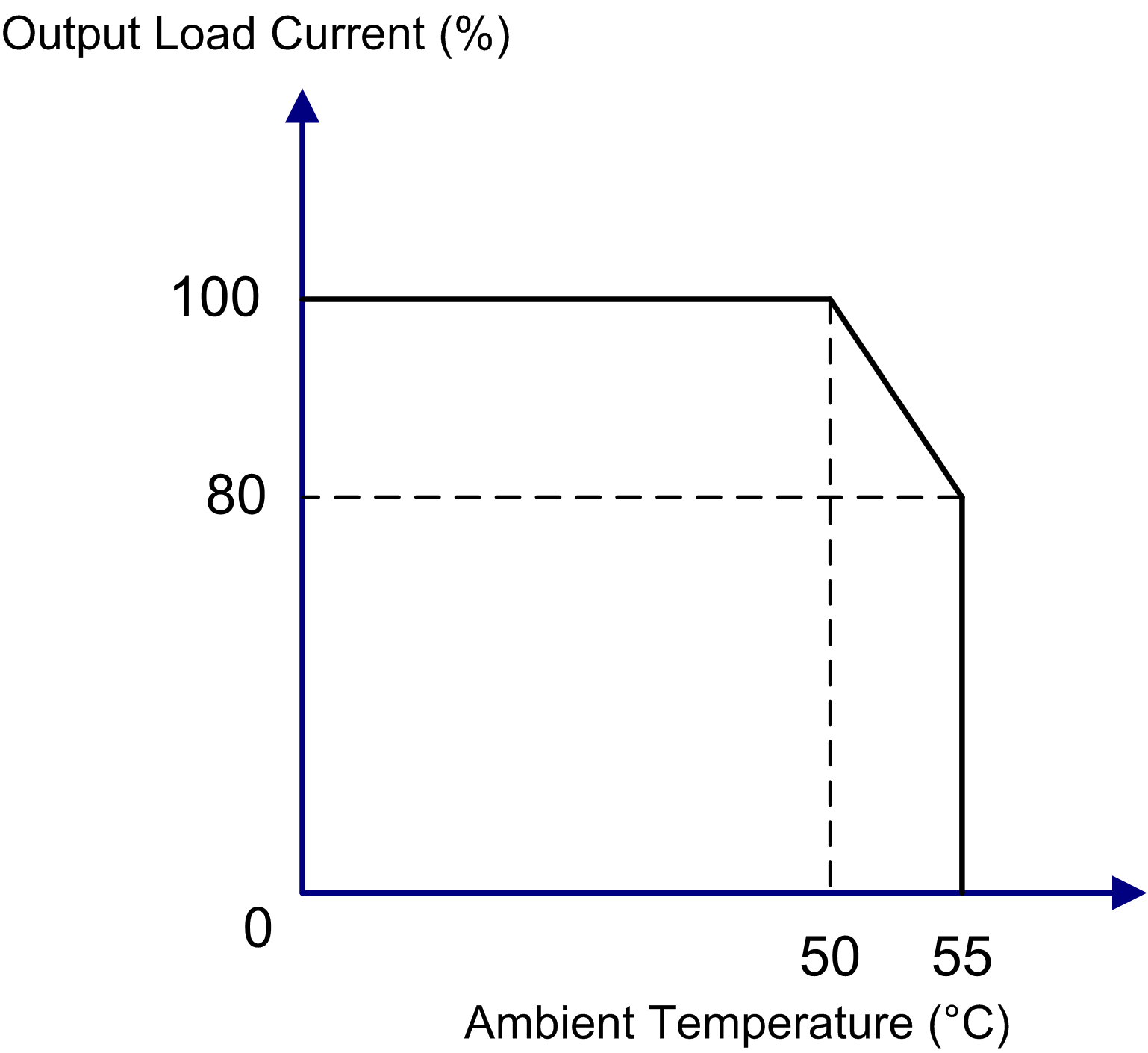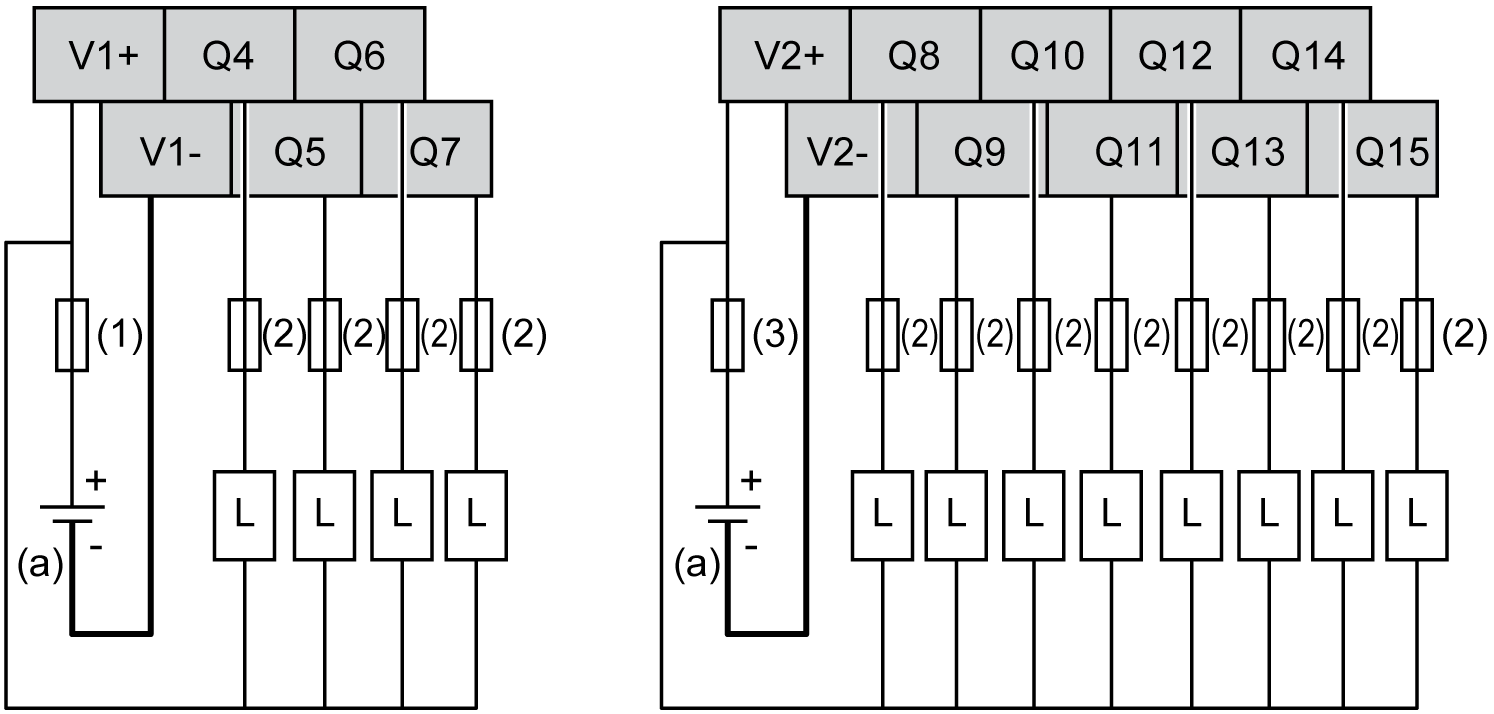TM218LDD40DUPHNB Regular Output
See Output Management for more information on managing outputs.
|
|
|
FIRE HAZARD |
|
Use only the correct wire sizes for the current capacity of the power supplies. |
|
Failure to follow these instructions will result in death or serious injury. |
|
|
|
UNINTENDED EQUIPMENT OPERATION |
|
Do not exceed any of the rated values specified in the environmental and electrical characteristics tables. |
|
Failure to follow these instructions can result in death, serious injury, or equipment damage. |
Regular Output Characteristics
The table below describes the characteristics of the M218 controller regular outputs:
|
Characteristic |
Value |
|
|---|---|---|
|
Rated voltage |
24 Vdc |
|
|
Input range |
20.4...28.8 Vdc |
|
|
Rated current |
Maximum 0.3 A for each point (see de-rating curve below) |
|
|
Current/group (4 points) |
1.2 A (see de-rating curve below) |
|
|
Residual voltage |
<1.5 Vdc for I = 0.1 A |
|
|
Delay |
Off to On (0.3 A Load): o(Q4 to Q7): 30 µs o(Q8 to Q15): 50 µs On to Off (0.3 A Load): o(Q4 to Q7): 0.3 ms o(Q8 to Q15): 1 ms |
|
|
Isolation (photo coupler) |
Between channels |
None |
|
Between channel and internal logic |
500 Vdc |
|
|
Minimum resistor load |
80 Ω at 24 Vdc |
|
|
Cable length |
Non-shielded: 150 m (492 ft) |
|
|
Protection against short-circuit |
Yes |
|
|
Terminal blocks |
Type: Screw, 7.62 mm (0.29 in.) pitch 2 rows are removable |
|
|
NOTE: Refer to Protecting Outputs from Inductive Load Damage for additional information on this topic. |
||
The following illustration shows the regular output de-rating curve:

NOTE: 80% de-rating when all the outputs are used at 55 °C (131 °F).
The following illustration shows the wiring diagram of the M218 controller's regular outputs:

(1) 1.2 A Type T fuse
(2) 0.3 A Type T fuse
(3) 2.4 A Type T fuse
(a) Sink outputs (positive logic)
NOTE: The assigned fuse values have been specified for the maximum current characteristics of the controller I/O and associated commons. You may have other considerations that are applicable based on the unique types of input and output devices you connect, and you should size your fuses accordingly.